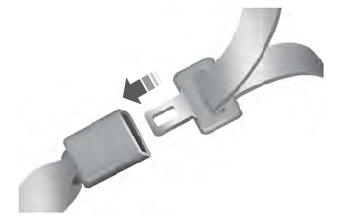Ford Escape: Power Transfer Unit / Diagnosis and Testing - Power Transfer Unit
Inspection and Verification
-
Verify the customer concern.
-
Visually inspect for obvious signs of mechanical damage.
Visual Inspection Chart
| Mechanical |
|---|
|
-
If an obvious cause for an observed or reported concern is
found, correct the cause (if possible) before proceeding to the next
step
-
If the cause is not visually evident, verify the symptom and refer to the Symptom Chart.
Symptom Chart
Diagnostics in this manual assume a certain skill level and knowledge of Ford-specific diagnostic practices.
REFER to: Diagnostic Methods (100-00 General Information, Description and Operation).
In most circumstances the PCM sets a DTC to help guide with diagnostics. Refer to the DTC Chart before using the Symptom Chart. The Condition column lists the vehicle condition. The Possible Sources column lists a detailed vehicle condition. The Action column lists the action to be performed to determine the cause of the condition. Each action lists the components that can cause the system and the individual components in that system. The components are listed in order of disassembly. Use the list of components and the required action to focus on disassembly inspections for the root cause of the concern.
| Symptom | Possible Sources | Action |
|---|---|---|
|
|
|
|
|
|
|
|
|
|
|
|
|
|
|
|
|
|
|
|
|
|
|
|
|
|
|
|
|
|
Inspection of the seal's mating journal should be performed every time a seal is replaced. The mating part/journal should be replaced if it has any of the following conditions: Radial wear groove that is felt by running a finger nail across where the seal lip runs. Scratches, pitting, galling, nicks or other shaft damage under or near where the seal lip runs. Discoloration or coked oil on the shaft where the seal lip runs. Shaft corrosion under or near where the seal lip runs. Sharp edges or burrs on the shaft lead in chamfer. NEVER use emery cloth on journal finishes, replace the part.
 Description and Operation - Power Transfer Unit - Overview
Description and Operation - Power Transfer Unit - Overview
Power Transfer Unit
The
Power Transfer Unit (PTU) is a gearbox that attaches to the
transmission. The PTU directs power from the transmission differential
case through a dog clutch to a hypoid ring gear...
 General Procedures - Power Transfer Unit Draining and Filling
General Procedures - Power Transfer Unit Draining and Filling
Materials
Name
Specification
Motorcraft® SAE 75W-85 Premium Synthetic Hypoid Gear LubricantXY-75W85-QL
WSS-M2C942-A
Draining
With the vehicle in NEUTRAL, position it on a hoist...
Other information:
Ford Escape 2020-2025 Owners Manual: Cold Weather Precautions. Breaking-In. Driving Economically
Cold Weather Precautions The functional operation of some components and systems can be affected at temperatures below approximately -13°F (-25°C). Breaking-In You need to break in new tires for approximately 300 mi (480 km). During this time, your vehicle may exhibit some unusual driving characteristics...
Ford Escape 2020-2025 Owners Manual: Autowipers
What Are Autowipers Autowipers turns on and controls the speed and frequency of the windshield wipers. Autowipers Settings Press Settings on the touchscreen. Press Vehicle Settings. Press Wipers. Switch Rain Sensing on or off. Note: When you switch the feature off, the wipers do not operate based on the rain sensor...
Categories
- Manuals Home
- 4th Generation Ford Escape Owners Manual
- 4th Generation Ford Escape Service Manual
- Opening and Closing the Hood
- General Procedures - Transmission Fluid Level Check
- Switching the Lane Keeping System On and Off. Switching the Lane Keeping System Mode. Alert Mode
- New on site
- Most important about car
Fastening the Seatbelts

